In this log we aim to give some basic understanding about our peltier based thermal haptic setup and cover basics of peltier elements too. As a bonus, We will share some lovely thermal camera footage of our peltier elements in action.
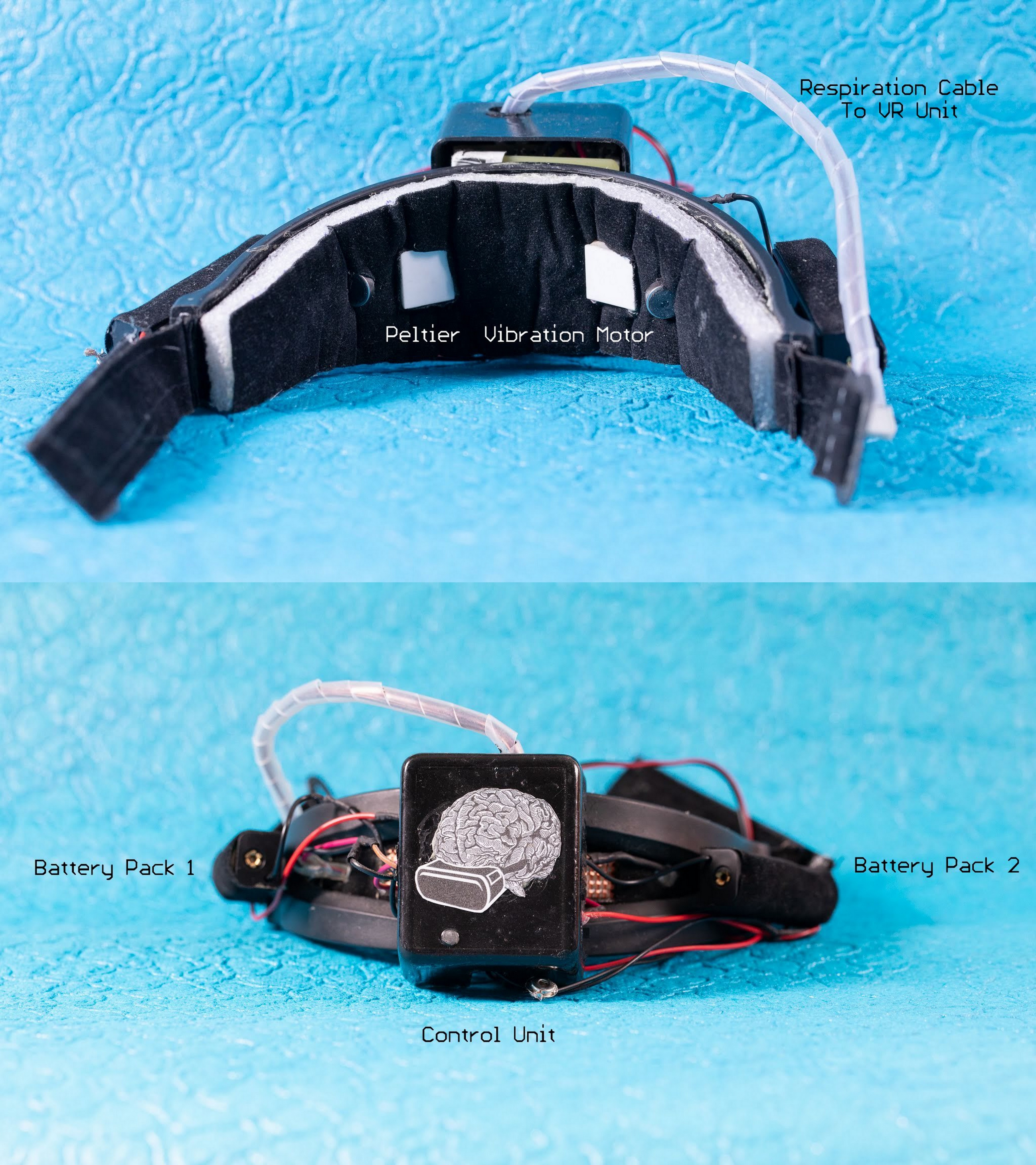
Final version of Haptic Feedback Unit
What are peltier and how do they work?
Peltier elements or Thermoelectric Coolers are electronic devices which are essentially solid state heat pumps. When a voltage is applied across the peltier element, the peltier begins to transfer heat from one end to the other end creating a temperature difference between the two sides. The inverse property can be used where in a difference in temperature is used to generate power, this configuration is a called a thermoelectric generator.

The Peltier assembly consists of alternate p & n type elements connected together by a solid copper plate housed by a ceramic material. Cooling occurs when a current passes through one or more pairs of elements from n- to p-type; there is a decrease in temperature at the junction ("cold side"), resulting in the absorption of heat from the environment. The heat is carried along the elements by electron transport and released on the opposite ("hot") side as the electrons move from a high- to low-energy state. A peltier element will can easily produce a large temperature difference of over 40°C between its hot and cold sides. However the more heat that moved, the less efficient it becomes. This is due to the peltier having to dissipate both the heat being moved and the heat it generates itself from its own power consumption. The peltier elements can be driven through using either constant voltage drivers or using motor drivers.
Peltier elements are widely used for various applications where accurate temperature control is required. They are used places like Insulin storage boxes to laser diode cooling elements.
Our Peltier system design
We started by looking for low power (<2A) & compact(<20mm) peltier elements, this however was not as easy we hoped due to many peltiers we needed were far too large or drew too much current and we had to search quite bit till we found the peltier element to fit our needs. The one we finally settled in on was the TES1-03102. This element had a 15*15 mm size and drew about 2.1A at 3.7V.
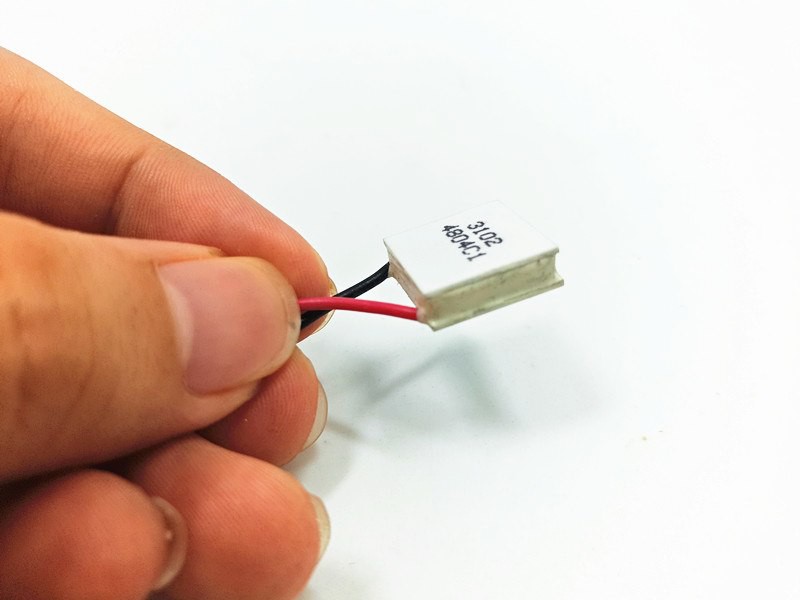
The cooling & heating effect was solid and we were able to get a quick response to changes in the current. We went with some existing guidelines of driving peltier elements using standard motor drivers like the LM293D but we found the driver to have issues driving two peltier elements. We then went on to use the DRV8835 dual channel motor driver to both power and control the peltier elements. The control scheme for the DRV8835 allows to easily reverse the direction of the peltier heat flow. This would allow to provide more smoother and enaging thermal haptics. One thing to note is that Peltier elements need a proper heatsink to function properly. We used these awesome looking copper heatsinks that were originally used on memory chips and phone SOC's.

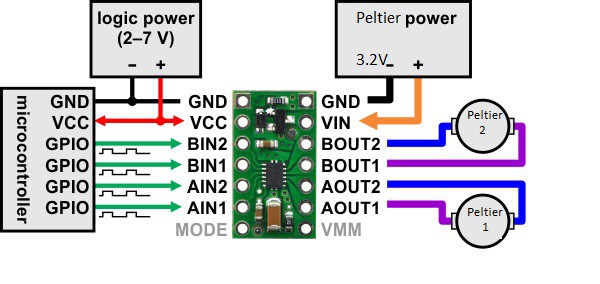
I cooked up some basic control logic to drive the peltier through regular PWM (Though several whitebearded bearers of arcane analog electronics suggest smoothing PWM).
After getting done with the circuitry, I soldered everything on a veroboard and used hinges to stack up two boards one above the another in order to make it a bit compact. Here is a photo after the 1st prototype.
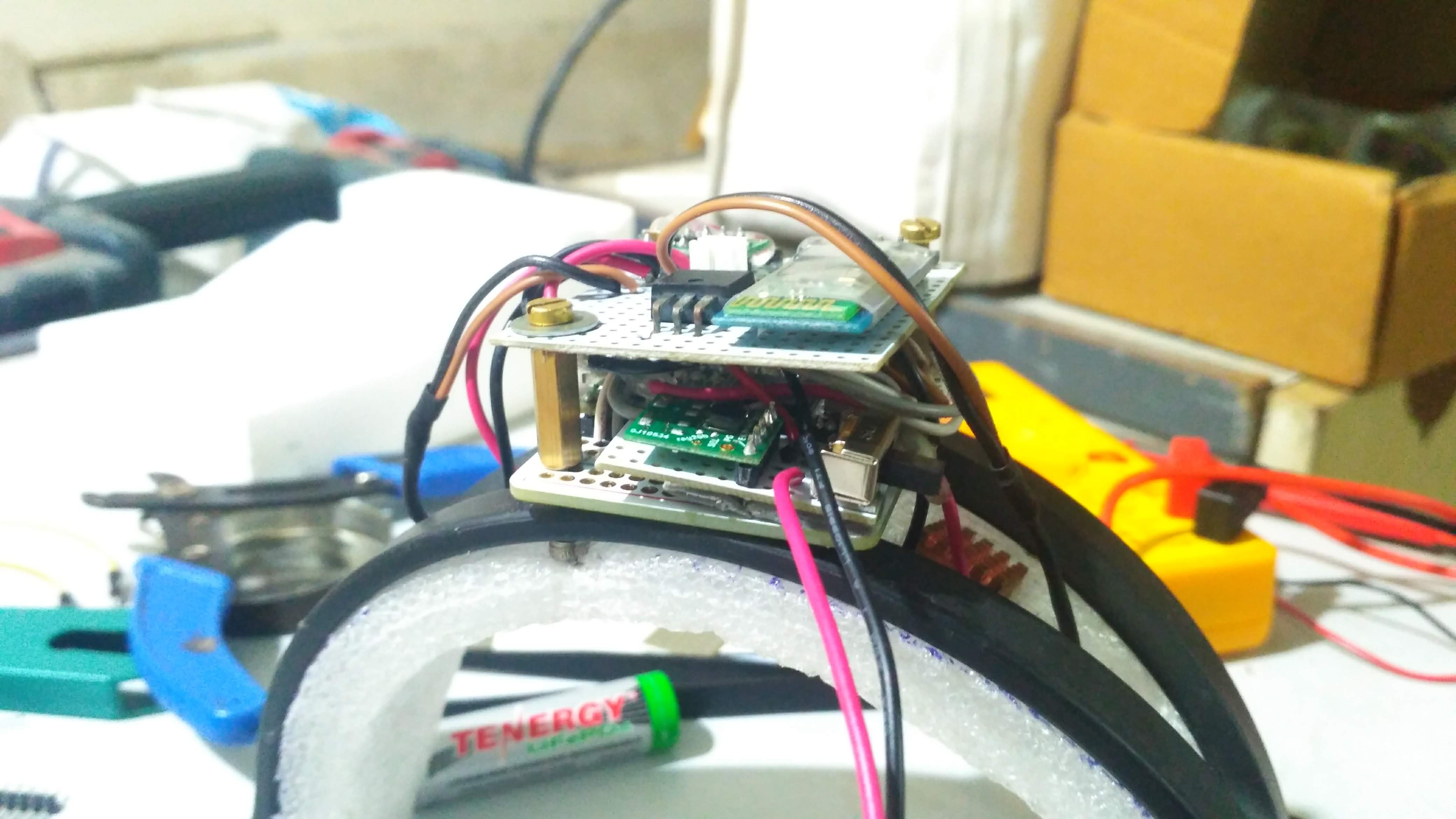
As promised here is the thermal GIF of the peltiers heating and cooling.
Please forgive the potato quality, we had to use the lower resolution FLIR Lepton for this.
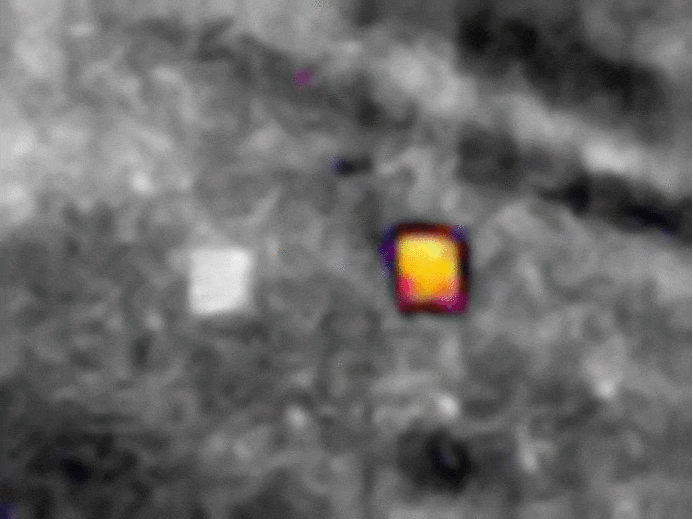
The experience of thermal haptics feels real good and evokes good feelings when we use it. There are still complexities involved with power and size that needs to accounted with this.
Next build log we'll talk about Muscle Stimulation haptics and how our journey into it has been.
Anyways, Happy Hacking folks.
 Vignesh Ravichandran
Vignesh Ravichandran
Discussions
Become a Hackaday.io Member
Create an account to leave a comment. Already have an account? Log In.